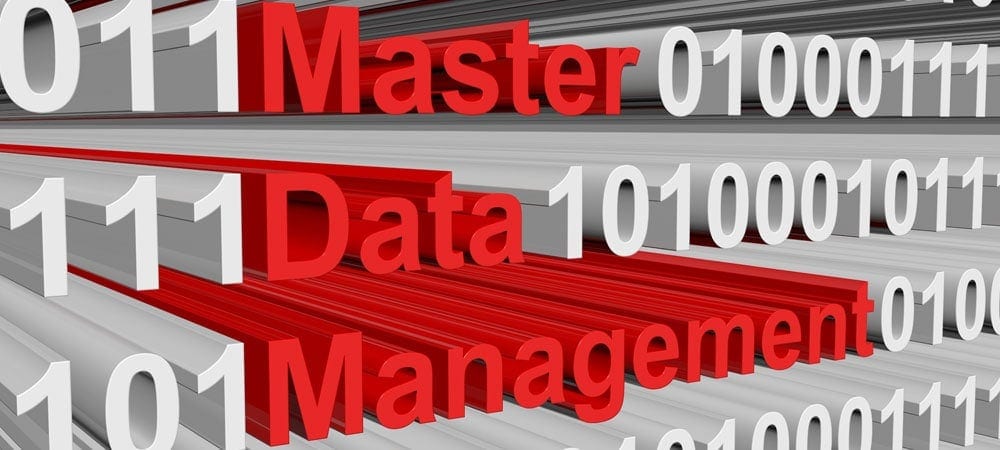Component-Based Architecture


Peter M. Färbinger discussed the challenges of the ongoing ERP release change in the SAP community with Roland Roudny, Partner and responsible for SAP at Q_Perior. At the end of the conversation, a hope and opportunity for existing SAP customers: The ERP monolith could be filleted into independent components and these could be coupled via interfaces. This would allow partners to contribute solutions based on this infrastructure.
E-3: When it comes to SAP S/4, digital transformation means more than just a release upgrade. What added value do you offer an existing SAP customer and what needs to be done to get this added value?
Roland Roudny: S/4 Hana takes a completely different approach to the technical implementation of business processes. This opens up new opportunities to set up processes more efficiently and effectively and to completely redesign them. However, this can only be achieved if there is a willingness to change - in other words, to rethink processes. We therefore do not see ourselves purely as SAP or technology consultants, but rather as the interface between management, specialist departments and the IT organization. So our first question is not: What technical requirements does a customer need for the release upgrade? Rather, we analyze what added value a company can potentially realize through the change.
E-3: What tools are used for a Hana conversion and S/4 release migration?
Roudny: SAP offers a whole range of standard tools for the change. These include, for example, the Readiness Check, the Migration Cockpit or the Software Update Manager. In addition, we introduce our own tools and project accelerators that additionally support and significantly simplify a release and database change. For example, we use our tools to archive or delete DSGVO-compliant data in advance of the actual migration or to check financial data, which also simplifies and accelerates the actual migration. In addition, we use specific tools from our partners - for example, in the area of authorizations.
E-3: Business processes are an essential component of digital transformation. What happens to the customer-specific Abap developments and modifications?
Roudny: The analysis of business processes is at the heart of our S/4 projects. This is where the real potential benefits for our customers lie. Process analysis tools such as SAP Spotlight provide an insight into the current use of standard processes and initial indications of possible starting points for optimization.
E-3: Where does this happen?
Roudny: This can also already be used on the existing ECC platform to prepare for the actual S/4 migration. The SAP best practice processes in S/4 are then the next step to analyze the current processes. We recommend - if possible - to use the preconfigured solutions. Only now can an assessment of existing customer enhancements or modifications be made. In many cases, these historically grown extensions are no longer necessary because they can be mapped well by the current standard or they have not been used for years.
E-3: And what happens to the rest?
Roudny: Developments that are still necessary and cannot be covered by the standard should then be checked for the possibility of porting to the business technology platform - "Keep the Core Clean". This achieves a clean separation between the SAP core and the individual developments, which significantly simplifies subsequent operation.
E-3: And for business process reengineering - i.e. process mining: What does Q_Perior recommend? Celonis or Signavio?
Roudny: Currently, there is no clear answer to this question. Celonis is a leading solution for process mining. Signavio takes a broader approach and encompasses process management - i.e. modeling -, process mining and process governance, the workflow. In addition, there is a portal for collaborative editing of processes.
E-3: What is important?
Roudny: Process collaboration is a central function for overcoming the gap between business and IT, which is still very pronounced in many companies. Whereas in the past, processes were described by the business and then implemented by IT, today both sides can use a uniform representation, which is also backed up with real data from process mining. The process models are not limited to the functional scope of the SAP portfolio: Numerous other standard applications can be integrated via adapters and even individual developments can be integrated with adaptations.
E-3: Where is the S/4 journey headed?
Roudny: Ultimately, it is a strategic decision whether to pursue the best-of-brand or best-of-breed approach. Regardless of this, it is also true here that both tools can only develop their potential if there is close cooperation between business and IT and a willingness to make changes. Both tools can contribute to this by providing facts.
E-3: Not only do the algorithms need to be revised and optimized, but a lot of data from the R/3 and ERP/ECC 6.0 systems also needs to be consolidated and archived. What solutions does Q_Perior offer for data compliance?
Roudny: In general, the data topic is an essential content of the first discussions with our customers. In a brownfield approach, archiving is a major topic depending on the system state, while in a greenfield approach the focus is on data cleansing. During data cleansing, many customers realize the importance of master data management. This is not a one-time effort, but requires a process consideration in the area of data management, otherwise the data quality would drop to the old level after a short time. To develop an optimal and pragmatic approach, we have developed a methodology in which we integrate both SAP tools and our own tools such as the Data Reduction Framework depending on the situation.
E-3: How do you explain the Rise with SAP concept and which components from this concept could be relevant?
Roudny: Rise with SAP focuses on the question of the general cloud approach. What is a company's position on the cloud - not just for S/4? Does it want to use dedicated cloud products such as Ariba, SuccessFactors and other cloud solutions? In the end, this discussion has a lot to do with the fundamental orientation of the future architecture, which should be clarified from the outset in order to avoid costly adjustments. The concrete implementation, such as the choice of hyperscalers, is then the next step, where we then also go into detail about the Rise with SAP concept.
E-3: How scarce will resources be for consulting and conversion in 2022?
Roudny: Although the maintenance end date for SAP ERP was originally the end of 2025, companies have been unusually quiet. Fortunately, SAP extended the maintenance window. Otherwise it would have been very tight for many. We clearly notice that S/4-
Hana inquiries will increase and the consulting market will become tighter. Studies have also been pointing to this for some time. Therefore, I strongly recommend to take care of this project promptly and to secure the required resources. What we are currently observing, and which should not actually be the solution to the deadline pressure, is that companies are opting for a brownfield approach right from the start, just to be able to transform more quickly and without risk by 2027 or 2030. I think they are missing a unique opportunity to anchor necessary changes in processes and organization in the system.
E-3: Which SAP topics will carry the most weight and be the focus of users in 2022?
Roudny: The transformation to S/4 Hana will dominate the discussion. This is accompanied by the question of the cloud architecture within the company. In addition, there are the topics around data analysis, which also include machine learning approaches or predictive analytics. From the point of view of users in the individual industries, the question of how they can integrate or further develop new solutions specifically for their industry also always plays a major role. As a cross-cutting theme, Fiori will also be important, as it helps all SAP users to use the applications more intuitively. This is a great help for newcomers to SAP in particular.
E-3: Does Q_Perior expect special focus and innovations from SAP in the coming year or also an adapted, strategic orientation?
Roudny: From my point of view, the fundamental strategic direction at SAP is clear. And that is cloud. Initiatives such as Rise with SAP, Industry Clouds or further developments in the cloud then pay off on this topic. We see from our customers that this strategic orientation is also desired. What could be exciting is the impact of the strategic partnership with Microsoft and, of course, the innovations that Gartner calls Component-Based Architecture. SAP breaks down the large ERP monolith into independent components that are linked to each other via interfaces. This means that partners can contribute solutions based on this infrastructure. We expect this to lead to many good approaches for our customers.
E-3: Thank you for the interview.





